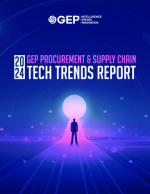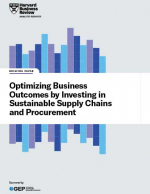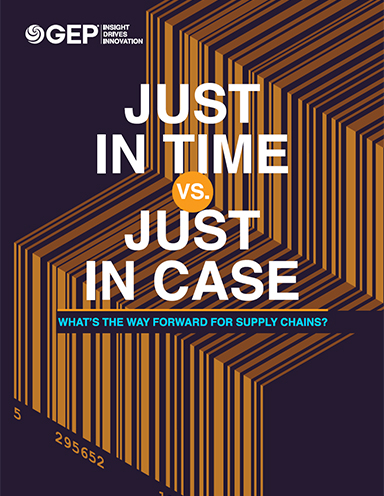Just in Time vs. Just in Case - What’s the Way Forward for Supply Chains?
This latest Procurement Leaders paper - Just in Time vs. Just in Case: What’s the Way Forward for Supply Chains? - shows why supply chain managers should shift their mindset with regard to inventory.
Strategies for a Post-Pandemic Era
Among supply chain leaders, increasing inventory was a common, understandable response to disruption in 2020.
As the pandemic starts to move from the forefront to the rearview mirror, what’s the best way to mitigate future shocks?
Holding more inventory isn’t the only method available, and it’s not even among the most effective.
As the Covid-19 coronavirus spread, large parts of the industrialised world slipped into various forms of lockdown.
For procurement organisations and supply chain functions, it was clear the world had changed: a ‘new normal’ - volatility 2.0 - had arrived.
New Environment
The commercial environment has changed considerably since many of those leaned-down JIT supply chains were put in place: Brexit, protectionism, the return of trade tariffs and quotas – such trade frictions are all too liable to interrupt JIT supply chains’ smooth operation.
Moreover, new rules now applied. For safety-critical and business-critical items, western business leaders no longer wanted leaned-down JIT supply chains. Forget China; they wanted inventory on hand, available now, and lots of it.
“In procurement organisations, there’s a growing perception that we’ve taken JIT too far,” says Wendy Tate, professor of supply chain management at the University of Tennessee, and coeditor-in-chief of the Journal of Purchasing and Supply Chain Management.
“Eliminating waste is good, but inventory isn’t necessarily the same as waste. Take out too much inventory, and you add risk. In short, we need to rethink what JIT means and the trade-offs.”
What’s Inside:
- What the Just in Time model is about - and why it’s misunderstood
- How flexibility and adaptability outmatch stockpiling inventory
- Why supplier relationships should be about more than just price and contract compliance
It’s a forward-looking read that will help supply chain professionals get ahead of tomorrow’s disruption today.
What’s Related




Favorites





